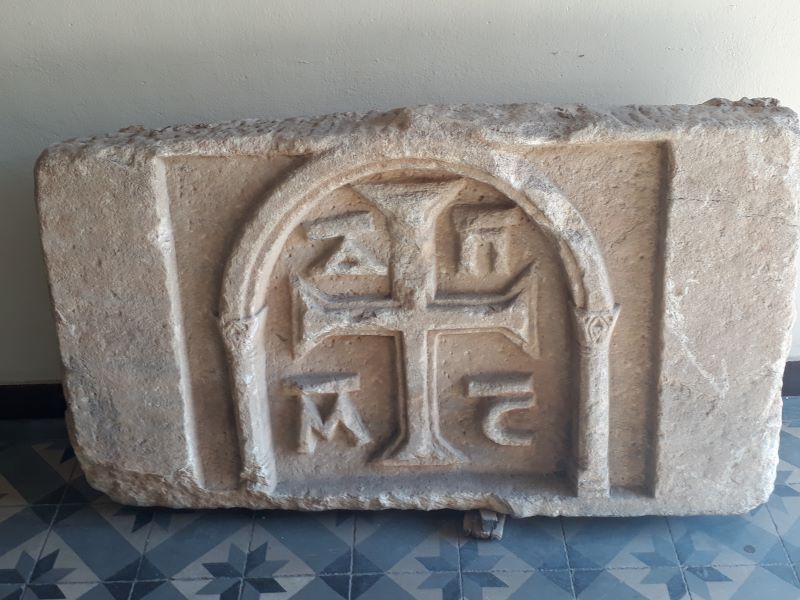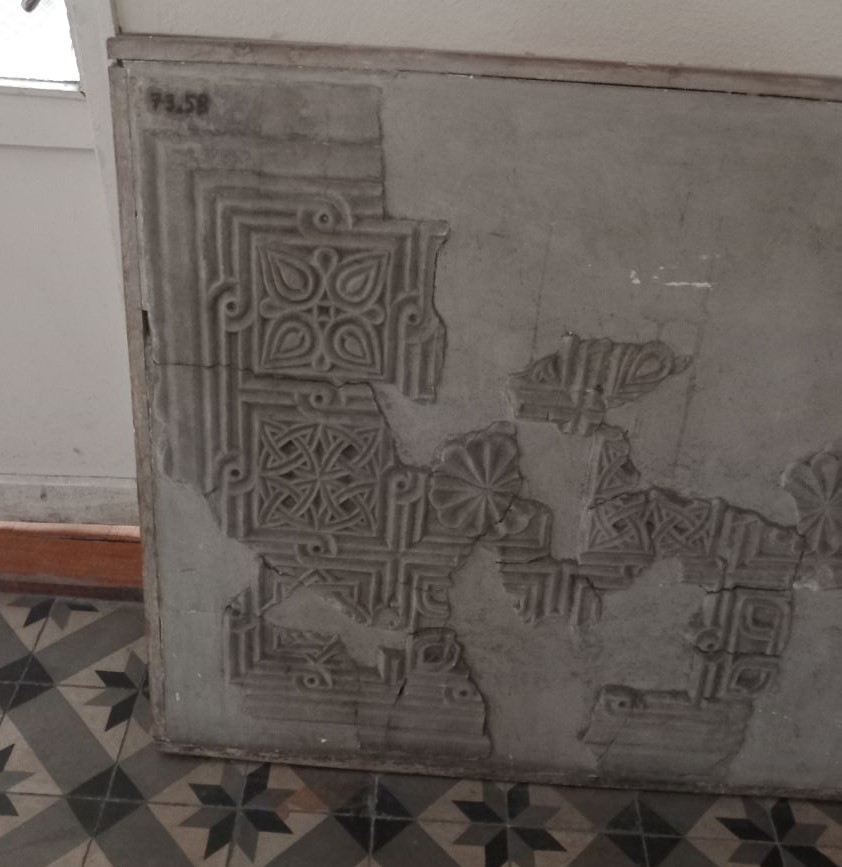- Hidden Crosses at Istanbul Archaeological Museum
- Hidden Crosses in Archaeology Museum Istanbul – Storage Section
- Istanbul’s Christian Archaeology in the Cafe Garden Monuments
- Hidden Crosses over the Cafe Terrace
- Byzantine Ruins on the Istanbul Archeology Museum Walkway
On the far end of the courtyard of the Archaeology Museum is the office building where Istanbul Christian ruins remain dormant in the corridor. All too often, I find the Christian ruins in corners stacked side by side and/or outside in a gathering area of ruined remains.
Istanbul Christian Ruins in Storage area
Without fail, a visit to the restrooms will be needed and entrance into the office area of that building on the far end of the courtyard will reveal some hidden items. Below is the building with the entry showing remains in the corridor.


The interior corridor displays quite a bit of church items from bells, cross panels and pillar columns.
This 12th or 13th-century marble slap from the Upper Castle in Anadolu Kavagi (Northeast portion of the Bosphorus). Now, theByzantinelegacy.com site states that someone stole the panel, removing it from the castle back in 2010. The Tetragram of letters declares that Faith begins with the Mysterious Cross. How appropriate that the center of faith is the cross of Christ.


The museum restores some Istanbul Christian ruins, like this church panel. Previously, the panel marked an interior church wall in Istanbul, but it now leans against this corridor wall without description. Below, other panels of former importance lie dormant in corners.


Former Orthodox Bells
In this section, two bells sit. The smaller one is Armenian, but the bigger one is Greek. In the 19th century, the Ottomans granted semi-freedom to the churches and allowed the ringing of church bells. Churches near Taksim, still ring their bells, especially on Sunday morning on Istiklal Street in Istanbul.


Hidden Courtyard
The Archaeology Museum is constantly renovated, restricting access to certain areas. One section between the office space and Tile Museum offers a display of discarded pillars, capitals, and stones.


In this hidden section, various Christian, secular, and Islamic remains are found, but a few crosses seem to be displayed on the broken pieces on the right. Previously, the area had two pillars with crosses on display (below). For 2023 and 2024, these have remained behind a renovation wall.


Regrettably, the church archeology ruins sit in corridors and empty, forgotten spaces, neglected and unaccounted for. Thankfully, Justinian moved away from wooden buildings and objects in the 6th century. He saw the fire of the second Hagia Sophia church burn to the ground, so he required stone and marble when he built his church. This trend continued throughout Byzantine history, so today, the stones and marble panels resist deterioration despite the lack of care.
Next, we will explore the museum’s cafe garden, which exhibits multiple church entryway stones.
Similar to this, I have also written some other writings about finding hidden things. Many ideas lie beneath the normal understanding when we only examine the surface surroundings. Please look into my book Searching Below the Surface, which provides key areas of difference between the Bible and the Quran’s teachings.
[…] Hidden Crosses in Archaeology Museum Istanbul – Storage Section […]